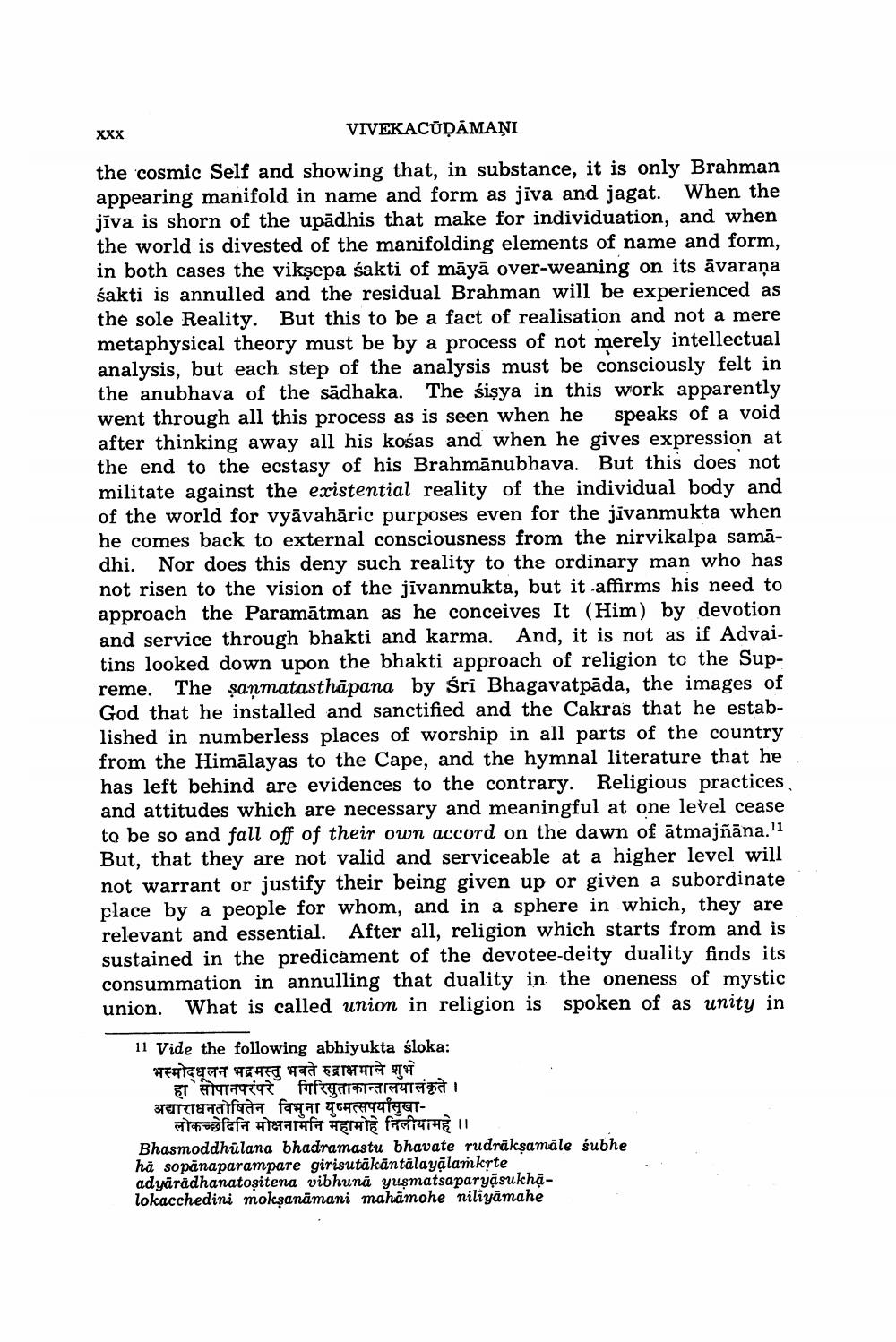________________
VIVEKACŪĻĀMANI
the cosmic Self and showing that, in substance, it is only Brahman appearing manifold in name and form as jiva and jagat. When the jīva is shorn of the upadhis that make for individuation, and when the world is divested of the manifolding elements of name and form, in both cases the vikṣepa sakti of māyā over-weaning on its avaraṇa śakti is annulled and the residual Brahman will be experienced as the sole Reality. But this to be a fact of realisation and not a mere metaphysical theory must be by a process of not merely intellectual analysis, but each step of the analysis must be consciously felt in the anubhava of the sadhaka. The śisya in this work apparently went through all this process as is seen when he speaks of a void after thinking away all his kośas and when he gives expression at the end to the ecstasy of his Brahmānubhava. But this does not militate against the existential reality of the individual body and of the world for vyāvahāric purposes even for the jivanmukta when he comes back to external consciousness from the nirvikalpa samādhi. Nor does this deny such reality to the ordinary man who has not risen to the vision of the jīvanmukta, but it affirms his need to approach the Paramātman as he conceives It (Him) by devotion and service through bhakti and karma. And, it is not as if Advaitins looked down upon the bhakti approach of religion to the Supreme. The sṣaṇmatasthapana by Śrī Bhagavatpāda, the images of God that he installed and sanctified and the Cakras that he established in numberless places of worship in all parts of the country from the Himalayas to the Cape, and the hymnal literature that he has left behind are evidences to the contrary. Religious practices and attitudes which are necessary and meaningful at one level cease to be so and fall off of their own accord on the dawn of atmajñāna.11 But, that they are not valid and serviceable at a higher level will not warrant or justify their being given up or given a subordinate place by a people for whom, and in a sphere in which, they are relevant and essential. After all, religion which starts from and is sustained in the predicament of the devotee-deity duality finds its consummation in annulling that duality in the oneness of mystic What is called union in religion is spoken of as unity in
XXX
union.
11 Vide the following abhiyukta śloka: भस्मोद्धलन भद्रमस्तु भवते रुद्राक्षमाले शुभे
हा सोपानपरंपरे गिरिसुताकान्तालयालंकृते । अद्याराधनतोषितेन विभना युष्मत्सपर्यांसुखा
लोकच्छेदिनि मोक्षनामैनि महामोहे निलीयामहे ||
Bhasmoddhulana bhadramastu bhavate rudrākṣamale subhe ha sopanaparampare girisutäkäntälayalamkṛte adyärädhanatoṣitena vibhuna yuṣmatsaparyāsukhālokacchedini mokṣanamani mahamohe niliyämahe




